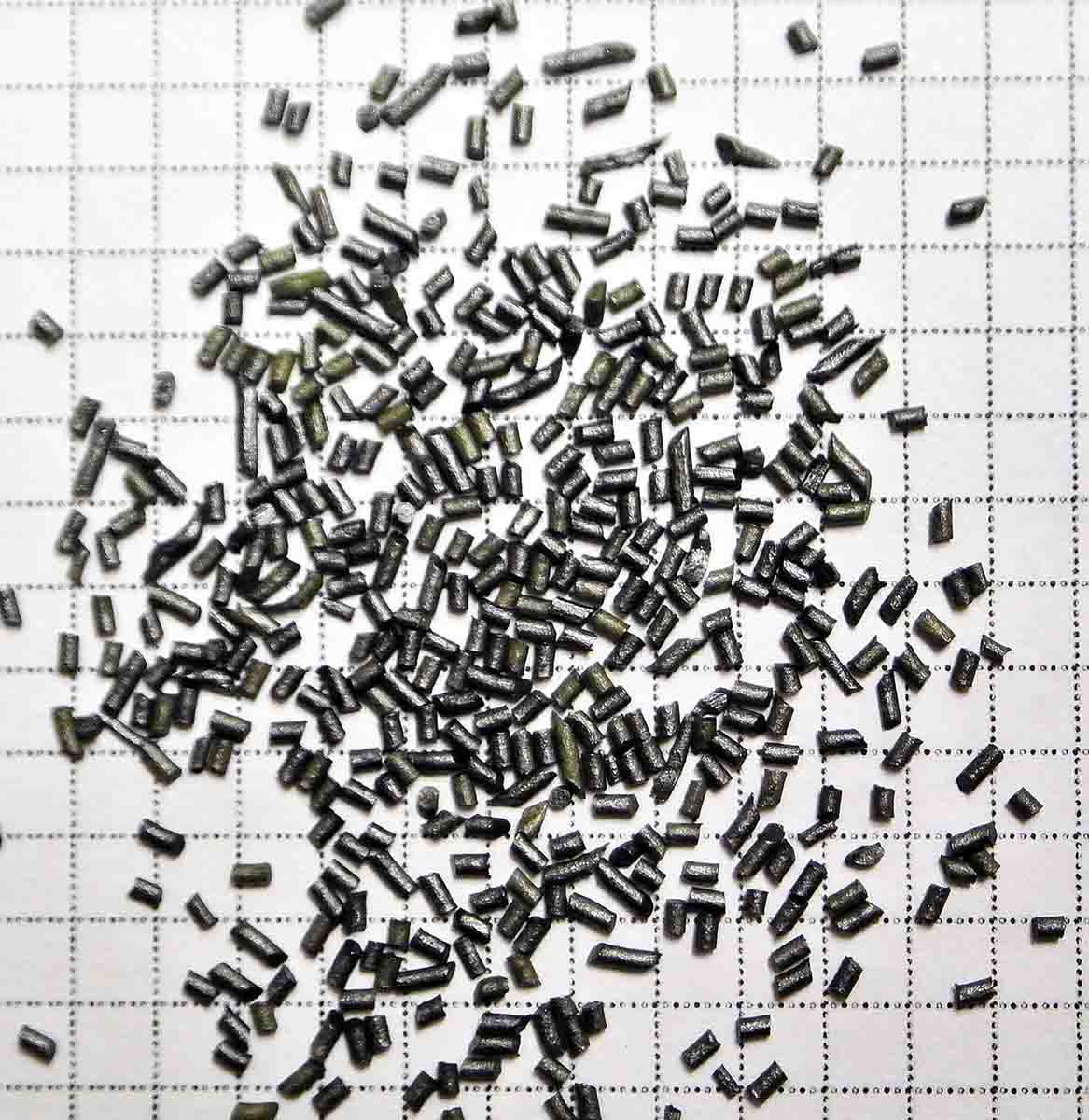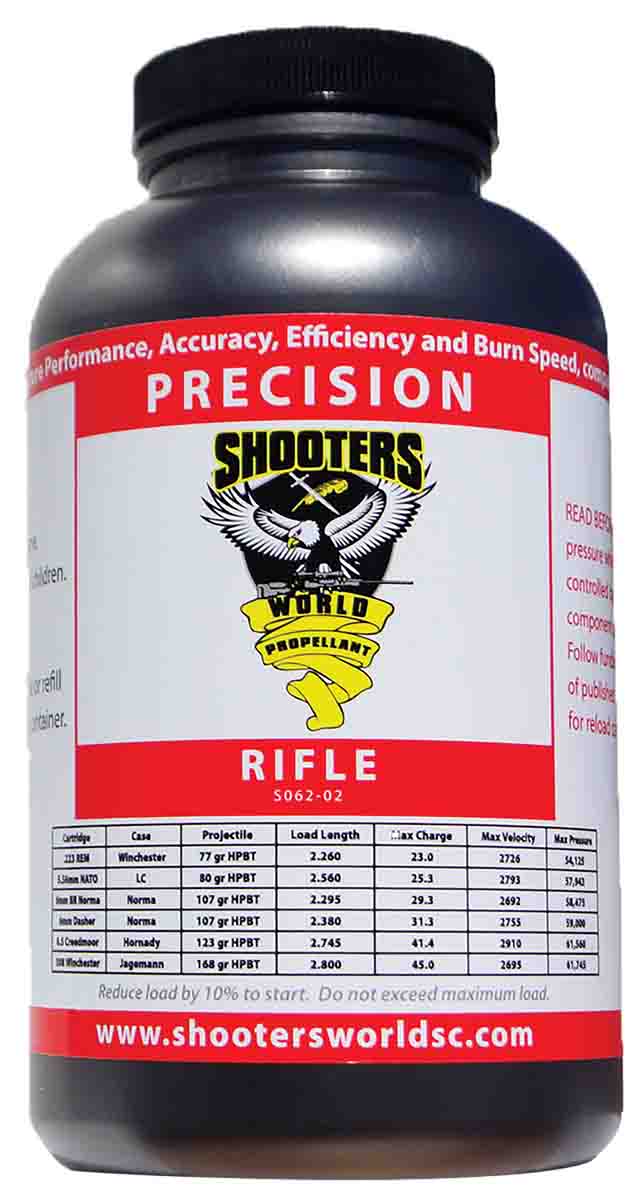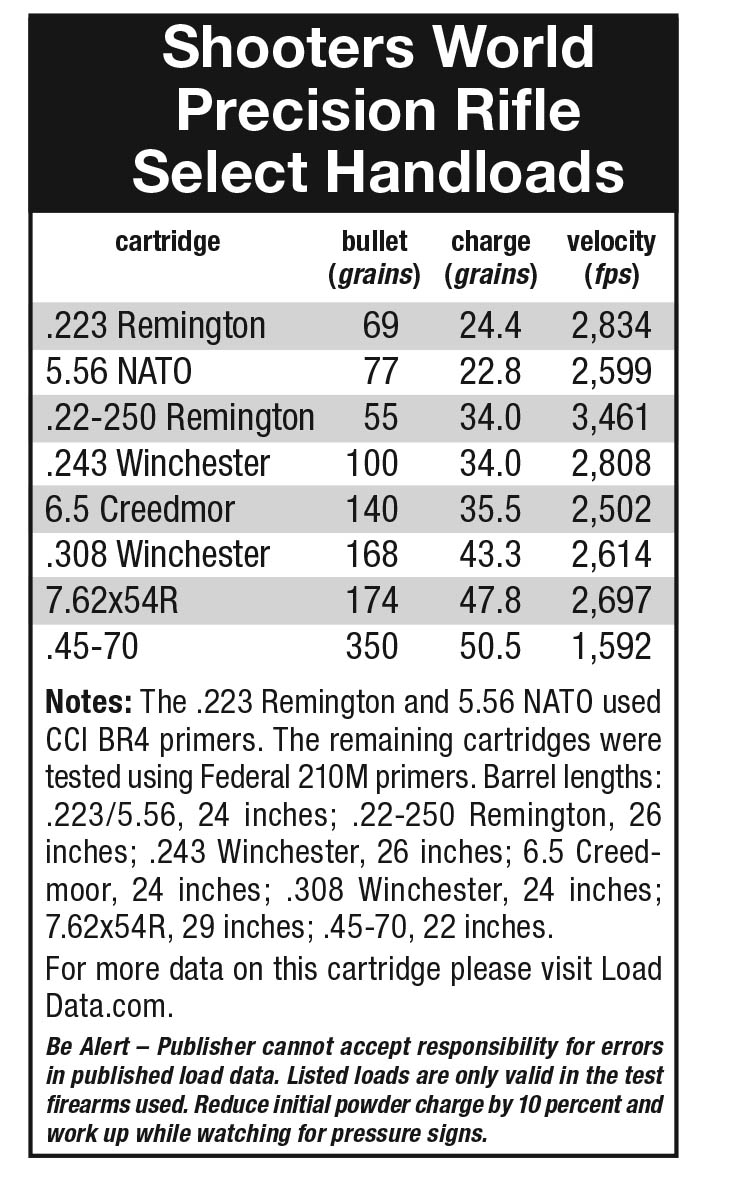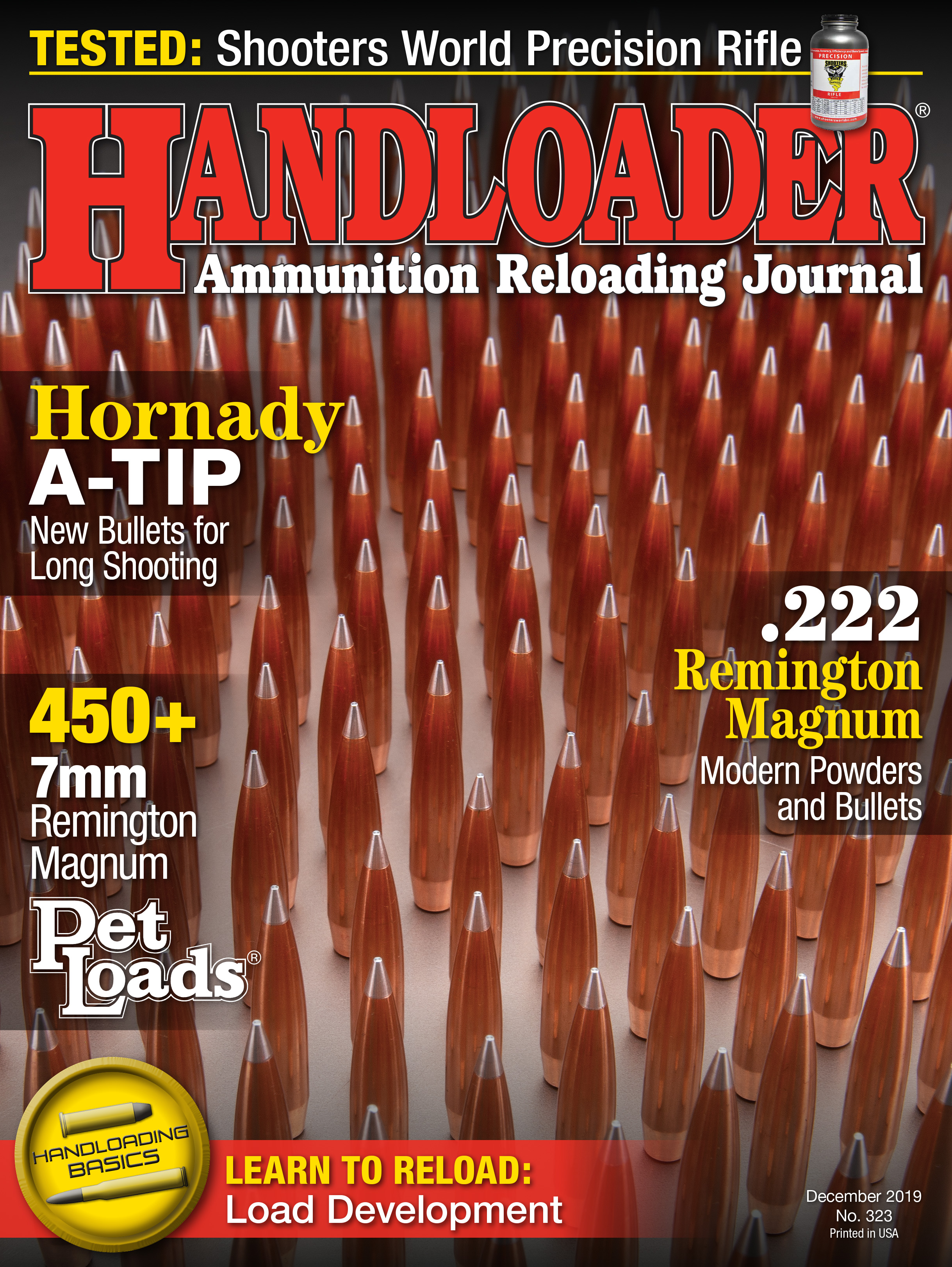Propellant Profiles
Shooters World Precision Rifle
column By: Rob Behr | December, 19
Shooters World canister propellants are relatively new to handloaders, but the company has been supplying bulk powders to ammunition manufacturers for years. With fifteen listed products ranging in burn rates appropriate for shotguns (Sparta 100) to the .50 BMG (Shooters World BMG), the company has a propellant to match most needs. The only exception is a relatively long gap between SW-4350 and the slowest BMG. Right now, the company does not have a canister product that competes with slow magnum powders like Hodgdon H-1000 and Reloder 25, but Shooters World’s ballistician Ken Johnson hinted strongly

When Shooters World entered the canister propellant market, creating a propellant that could compete with Hodgdon’s Varget was high on the list. Johnson selected Lovex SO62 as the basic propellant for what would become Shooters World Precision Rifle. He wanted to develop a powder that was more temperature-stable than Varget with extremely consistent ignition characteristics. “We just kept asking the manufacturer to meet our requirements,” he explained, “And they exceeded our expectations.”
The refined product that is now Precision Rifle is a short-cut, single-base extruded powder that uses nitrocellulose as its main energetic component. Individual powder grains were very consistent in diameter, measuring .030 inch. Lengths were less consistent. Most measured about .050 inch but there were some that were as small as .031 inch and a few as large as .128 inch. The grains are dark grey with a greenish or black sheen. As a European- manufactured powder, it is REACH compliant with stabilizers and plasticizers.
Shooters World propellants are manufactured by Explosia s.a., a century old propellant and explosives maker located in the Czech Republic. Marketed in Europe under the Lovex brand, Explosia products are a mainstay in the European smokeless powder market. Explosia was a major provider of propellants for the Accurate Arms line of powders in the U.S. until that company was purchased by Western Powders in 2004. It continued to supply Accurate propellants until about 2008.

There are two published sources for handloaders using Shooters World propellants. Shooters World has published a 32-page booklet that includes data for eight cartridges using Precision Rifle. While that might seem a scant listing, this initial data (and Johnson assured there is much more
on the way) covers a good variety of competition cartridges. Standouts include the 6mm BR Norma, 6mm Dasher and the 6.5 Creedmoor. The data is available online at shootersworldpowder.com. By the time this is published, Shooters World expects to have a new searchable handloading database online to supplement the downloadable PDFs.
The Lovex Reloading Guide is also available online from Shooters World and directly from Explosia at Explosia.cz. This manual adds data for 27 more cartridges using Lovex S062, with very little overlap between it and the Shooters World Reloading Guide. Some of the cartridges are uncommon in the U.S., but the guide covers American favorites, including the .243 Winchester and .300 Winchester Magnum.
QuickLoad also includes data for Lovex S062. Johnson noted the Shooters World propellants are now scheduled to be added to the QuickLoad database, a nice additional resource for handloaders. Since I had two rifles waiting for testing that should function well with powders in the “4064” burn range, I went to QuickLoad to see if S062 fit the bill. It did and a .45-70 and 7.62x54R became my first testbeds for Precision Rifle.
I had added an XS Sight System rail and Hi-Lux long-eye relief scope to my 1895 Marlin .45-70 and it needed zeroing for an upcoming hunt. Using QuickLoad, I settled on a 350-grain Hornady flatpoint bullet pushed by 50.5 grains of Precision Rifle and a Federal 210M primer. I set an RCBS Uniflow to throw a short charge, planning to make up the difference using a trickler because of the powder’s extruded geometry. By luck, the first two throws were 50.2 grains. The third went up to 50.4, but the forth was back to 50.2 grains. I had read Precision Rifle meters better than most stick powders but had discarded it as advertising hyperbole. I was wrong. It really did meter quite well.
Using that load, the Marlin rifle averaged 1,592 fps from a 22-inch barrel. Accuracy was better than I expected and was especially impressive using the ghost-ring sights. Zeroed at 50 yards, the ghost rings produced several groups that loosely cloverleafed and none that were embarrassing. At 100 yards, the rifle printed just under 2 inches on average. It was a good start.
The Mosin 91/30 was an oddball with a scout scope. I had absolutely no expectations for it. It actually shot fine using new Norma 7.62x54R cases, Federal 210M primers and 47.8 grains of Precision Rifle behind a Sierra 174-grain MatchKing. At an average velocity of 2,697 fps, the rifle shot consistent 3-inch groups, which I took as a win.
Next was a Bushmaster Varminter 5.56 NATO. Working up to 24.4 grains of Precision Rifle ignited by a CCI BR4 primer and using 69-grain Barnes Match Burners, average velocity was 2,834 fps with an extreme spread of

A Savage Model 12 .22-250 Remington using Sierra 55-grain GameKing bullets was tested with 34.0 grains of Precision Rifle. Velocity was good at 3,461 fps. The chronograph numbers were steady, so it seems the powder was doing its job. The .243 Winchester loads using Sierra 100-grain GameKings were very accurate. Velocity was a bit less than I had hoped for with a 26-inch barrel, but I certainly couldn’t fault the groups.
A powder called Precision Rifle must be tested in the 6.5 Creedmoor. With Federal 210M primers in new Hornady cases and 37.0 grains of Precision Rifle, a 24-inch barreled Ruger Precision
Rifle produced an average of 2,570 fps using 140-grain MatchKings. The smallest group was .310 inch. The rest of the groups, as I was coming to expect, were consistent and tight.
Since Shooters World markets Precision Rifle as a direct competitor to Varget, it seemed only fair to compare the powders using the same components. Also, considering that S062 had once been marketed as Accurate Arms 4064, I tested Canadian-manufactured Accurate 4064 to compare velocities. Using data supplied by Shooters World, Sierra and Western Powders, I selected a charge of 43.3 grains pushing a Sierra 168-grain MatchKing because it was a point of intersection for all three propellants.
Using new .308 Winchester cases and Federal 210M primers, three sets of cartridges were loaded using each propellant. I did not shoot A-4064 for group. I was only interested in comparing velocities with Precision Rifle. The average velocity produced by Precision Rifle in my Remington Model 700 PSS with a 24-
inch barrel was 2,614 fps. The A-4064 load averaged 2,612 fps. Varget produced slightly higher velocities with an average of 2,620 fps.
I didn’t test the powders like Johnson has, from an extreme cold of -65 degrees Fahrenheit to a high of 165 degrees Fahrenheit. Those extremes are for ballistic labs and ballisticians like Johnson. He says Precision Rifle wins. After what I saw on the range, I think he could be right.


